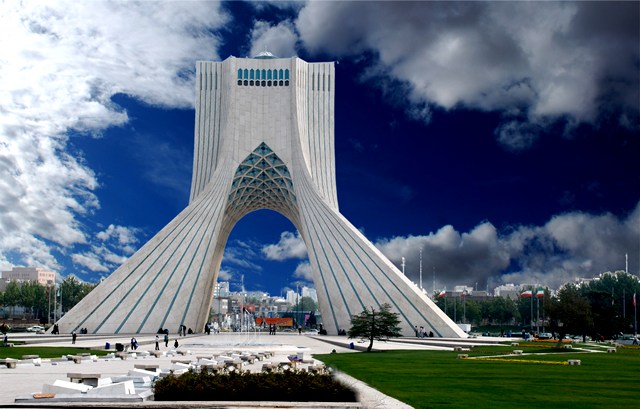Tehran is the capital city of Iran. A bustling metropolis of 14 million people, it is situated at the foot of the towering Alborz mountain rang. Tehran is a cosmopolitan city, with great museums, parks, restaurants, and warm friendly people. It deserves at least a few days of your Iranian itinerary.
Tehran Altitude between 1,200 and 1,700 meters. Mehrabad Airport to the west of city. Railway: European link through Tabriz and Istanbul, internal lines to Mashhad, Yazd and Khorramshahr. Regular coach services in all directions.
Capital and largest city of Iran and Tehran Province in an area of 600sq. km. since 200 years, is located in the northern part of the country. Tehran is Iran's administrative, economic, and cultural center as well as the major industrial and transportation center of the region. The city sits on the slopes of the Alborz Mountains at an elevation of about 1,210 m., on the northwestern fringes of the Dashte-e Kavir , a desert in central Iran. Most of the grow1h is channeled along an east-west axis and toward the south, to the north, the city is constrained by the steep Alborz Mountains. Most commercial and government buildings are located in the center of the city. Residential structures predominate elsewhere. The climate has marked seasonal contrasts, with short springs and autumns separating cold winters and hot, dry summers.
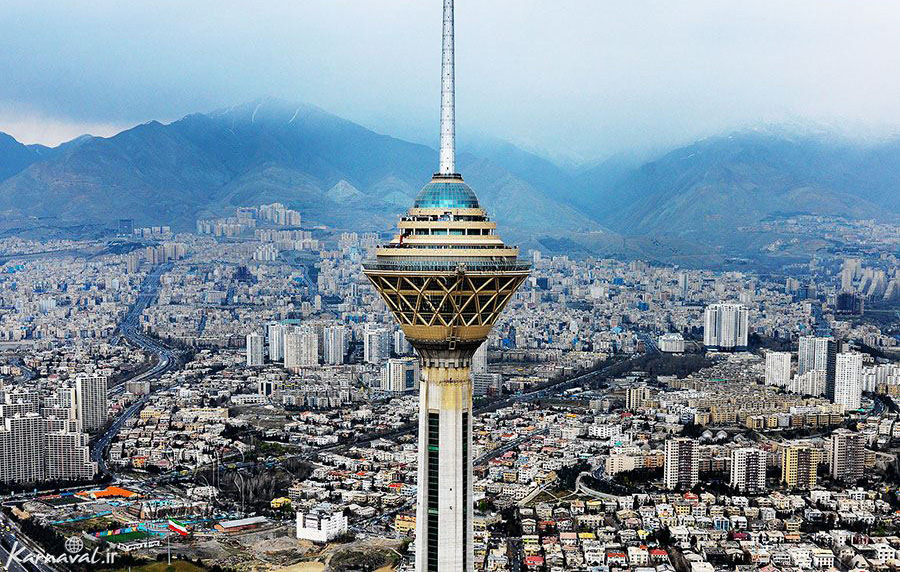
History
Tehran is the latest and the largest capital city in the 7000-year history of Persia , as Iran was called by many people in the West before 1935. The original settlement of Tehran, north of the ancient city of Rey, may have been founded as early as the 4th century. By the early 13th century it was a small village. In 1221 invading Mongols led by Chengis Khan destroyed Rey, but Tehran survived and grew slowly in the following centuries. During the reign of the Safavid Shah Tahmasp (1524-1576) a wall and four watchtowers were built around the city, and by the early 17th century Tehran had about 3000 houses. In the 1720s Afghan invaders attacked Tehran. The town defeated the initial Afghan force but fell to the main Afghan army and suffered tremendously under their occupation from 1723 to 1729. Nadir Shah freed Tehran in 1729. In 1788 Aqa Mohammad Khan, founder of the Qajar dynasty, made Tehran his capital, inaugurating the modern history of Tehran. At this time Tehran's population was estimated to be 15,000. Under the Qajar dynasty (1786-1925), Tehran grew in population and size, and new administrative buildings, palaces, mosques, and garrisons were constructed.
Some Important places
Mount Damavand
Mount Damavand , the highest mountain in Iran , has for centuries attracted mountaineers , nomads and legends to its snow-covered slopes. The epic hero Fereidun wrestled and defeated the evil giant Zahakis, chaining him to a cave on the mountain peak. Villagers living near the base of the volcano still remark that Zahakis is straining to be free at the first signs of smoke or rumblings often heard deep within the mountain. On a clear day, the 18,600-foot cone is visible from Tehran, fifty miles away.
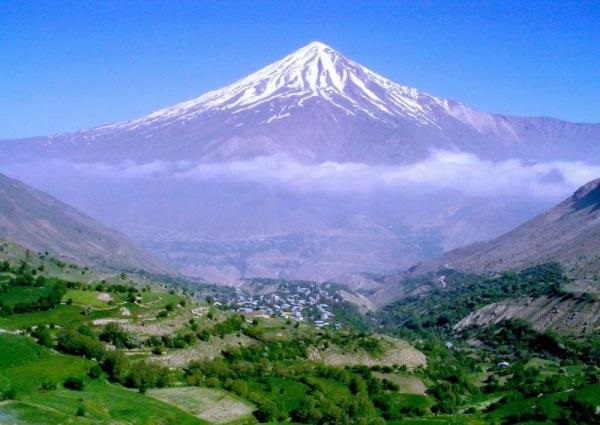
Tehran’s Museums
More than 54 museums and galleries are located in Tehran, some of which are internationally recognized museums that are key drives of Iranian tourism and play a significant role in attracting visitors. Some of internationally acclaimed and most celebrated Tehran’s museums are as follows:
National Museum of Iran
National Museum of Iran, aging more than 70 years, containing 300,000 artifacts in an area of more than 20,000 square meters, is not only the largest museum of History and Archaeology of the country, but ranks as one of the few most prestigious museums of the world in regard to grand volume, diversity and quality of its huge monuments. In the Iranian museum tradition, it is considered Iran’s mother museum, aiming at preserving relics of the past to hand down to the next generations, enhancing better understanding among world peoples and nations, discovering and showing Iranian’s roles in shaping world culture and civilization and trying to enhance public knowledge.
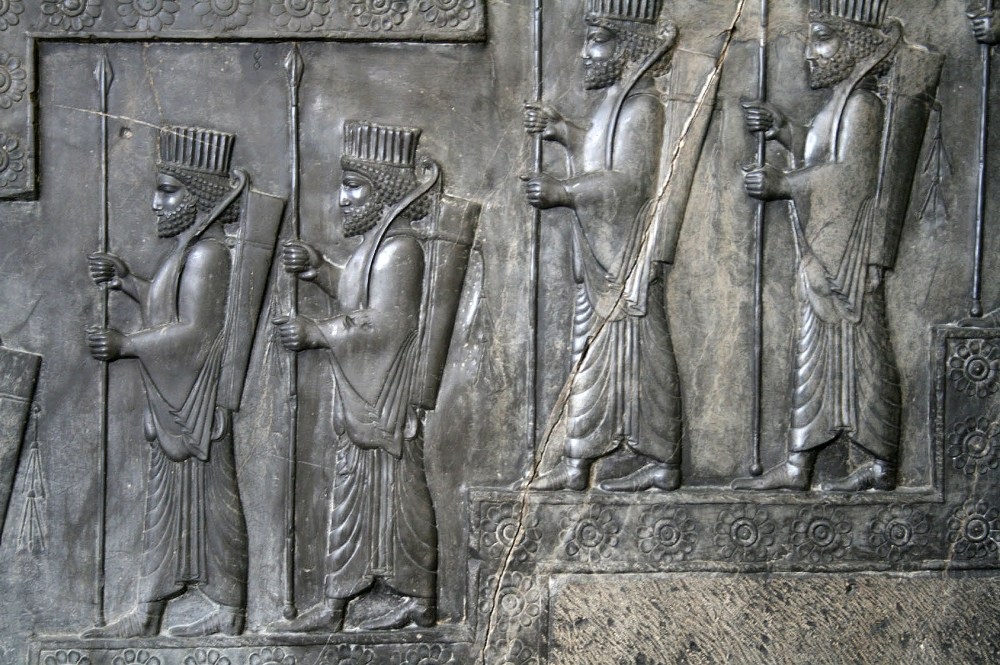
Golestan Palace
During the reign of the Safavid Shah Abbas 1 , a vast garden called Chahar Bagh (Four Gardens) , a governmental residence and a Chenarestan , (a grove of plane trees) , were created on the present site of the Golestan Palace and its surroundings. Then , Karim Khan Zand (17491779 A.D. ) ordered the construction of a citadel , a rampart and a number of towers in the same area. In the Qajar period , some royal buildings were gradually erected within the citadel; for instance , in 1813 which coincided with the fifth year of the reign of Fath Ali Shah , the eastern part of the royal garden was extended and some other palaces were built around the garden , called the Golestan Garden.
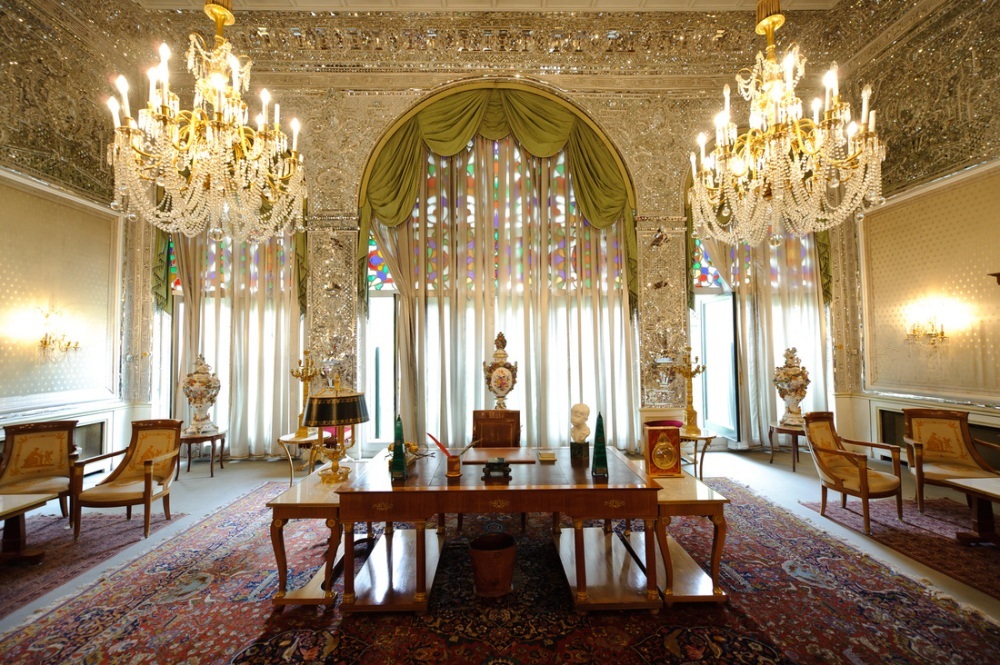
Registered in UNESCO World Heritage Lists, the lavish Golestan Palace is a masterpiece of the Qajar era, embodying the successful integration of earlier Persian crafts and architecture with Western influences. The walled Palace, one of the oldest groups of buildings in Teheran, became the seat of government of the Qajar family, which came into power in 1779 and made Teheran the capital of the country. Built around a garden featuring pools as well as planted areas, the Palace’s most characteristic features and rich ornaments date from the 19th century. It became a centre of Qajari arts and architecture of which it is an outstanding example and has remained a source of inspiration for Iranian artists and architects to this day. It represents a new style incorporating traditional Persian arts and crafts and elements of 18th century architecture and technology.
Tehran Azadi Square
Archaeological Museum One of the most exciting discoveries in recent Iranian archaeology was this majestic statue of Darius the Great found December, 1972, inside the palace gatehouse at Shush (Susa). It is the first known large-scale statue in the round from Iran of the Achaemenian period, and shows the king dressed in the Persian manner similar to the king dressed in the Persian manner similar to the relieves at Persepolis. Inscriptions in Egyptian hieroglyphics , Old Persian , Elamite and Acadians identify the statue as being Darius 1 , and state that it was made in Egypt. The head is missing, and it remains uncertain whether the king wore an Egyptian or a Persian crown.
